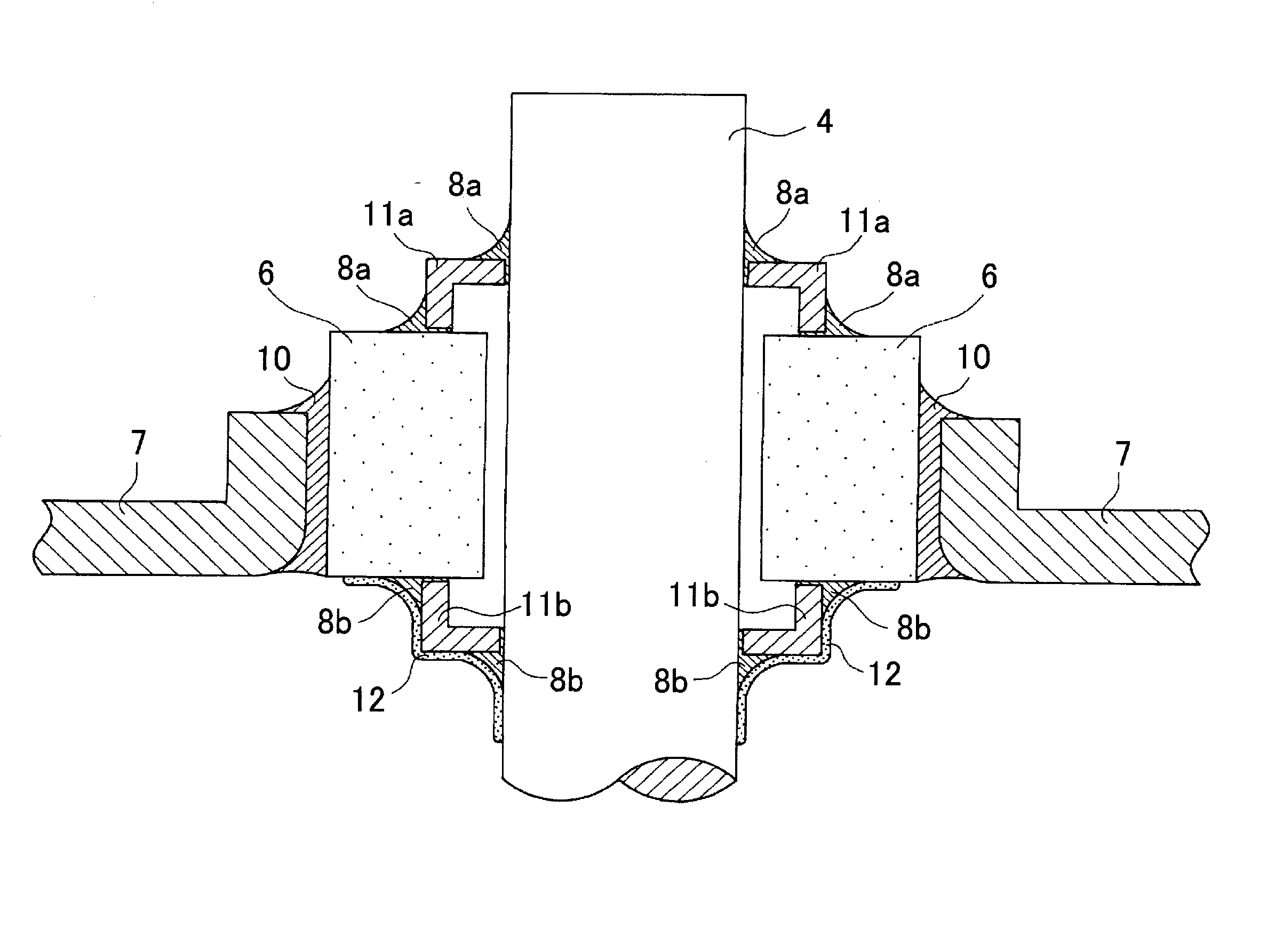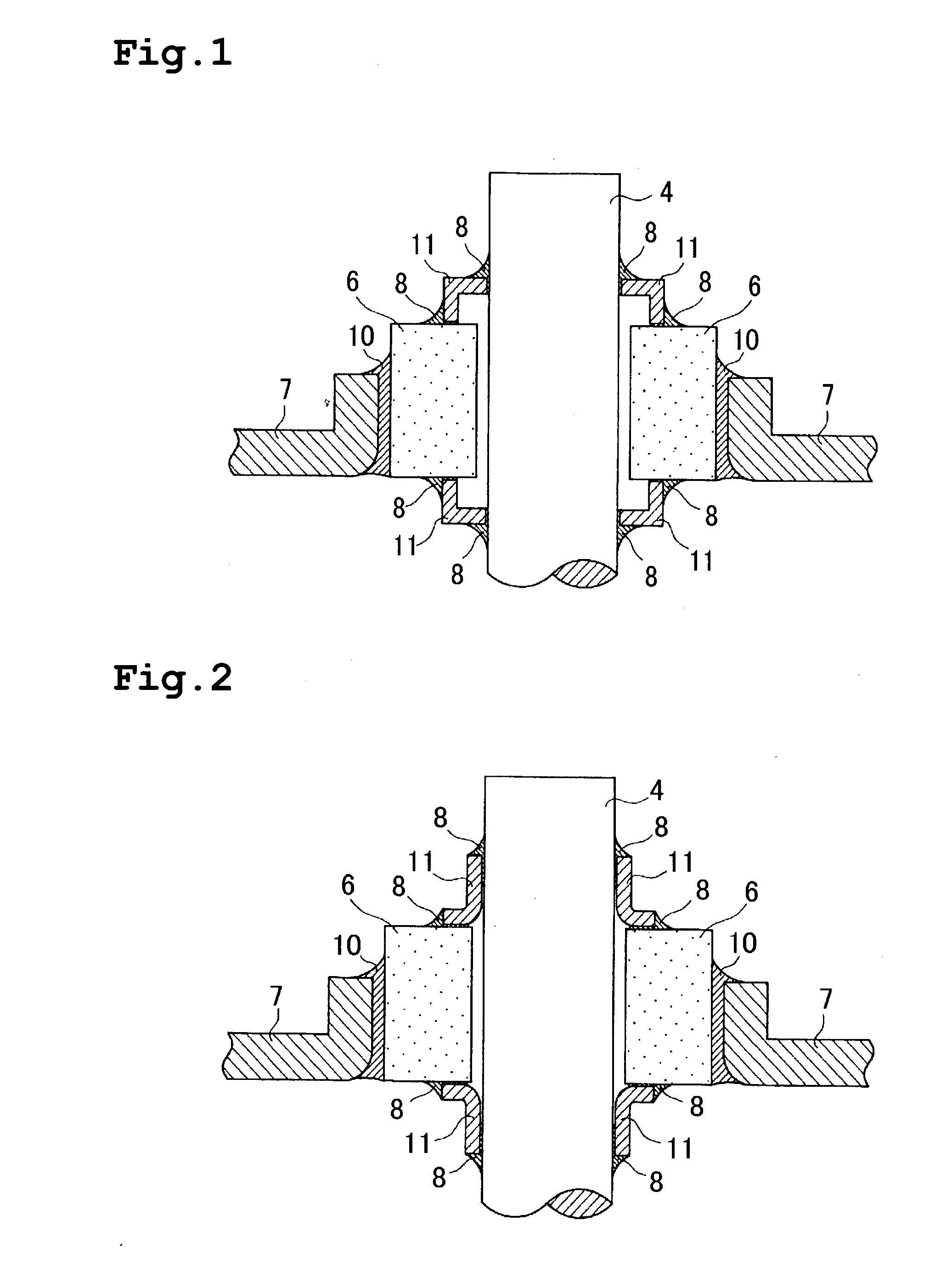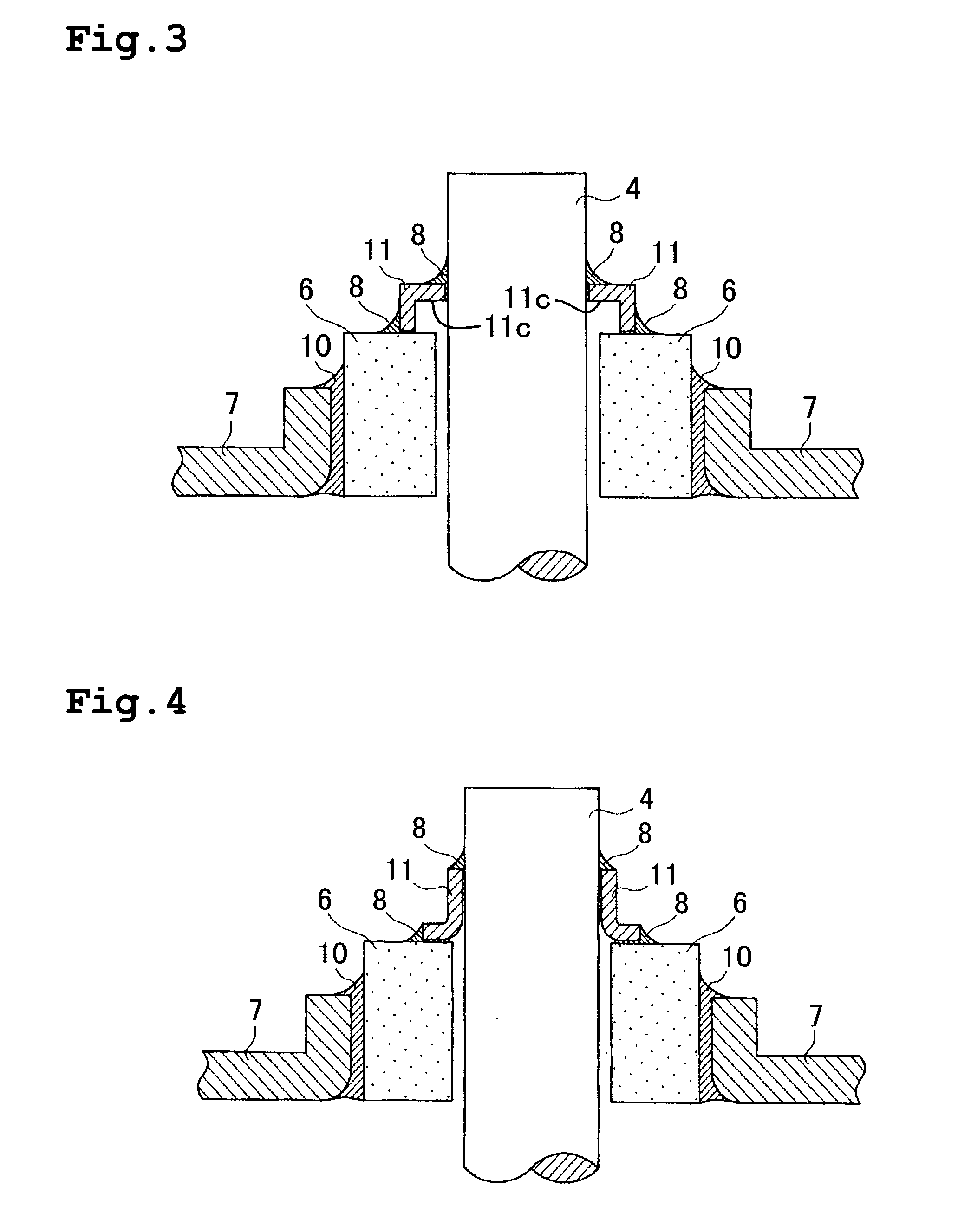Battery
a battery and insulating sleeve technology, applied in the field of batteries, can solve the problems of void generation, deformation of air tightness of the battery sheath, and inability to completely prevent cracks in the ceramic insulating sleeve, so as to prevent cracks, reduce voids, and improve the strength of brazing
- Summary
- Abstract
- Description
- Claims
- Application Information
AI Technical Summary
Benefits of technology
Problems solved by technology
Method used
Image
Examples
first embodiment
[0056] [First Embodiment]
[0057] A first embodiment of the invention will be described with reference to FIGS. 1 to 4.
[0058] An insulating seal (ceramic hermetic seal) arrangement for a positive terminal 4 or negative terminal 5 according to this embodiment is used for a non-aqueous electrolyte secondary battery similar to the conventional battery described above.
[0059] The sheath of the non-aqueous electrolyte secondary battery is essentially the same as that of the conventional battery shown in FIG. 17, and thus, it is not illustrated. Referring to FIG. 17, it comprises an elliptic-cylindrical metallic case 2, a lid plate 3 that is hermetically fixed to the metallic case 2 in such a manner that it is fitted into an upper opening of the metallic case 2 and welded thereto, and terminal supporting plates 7, 7 that are hermetically fixed to the lid plate 3 in such a manner that they are fitted into openings in the lid plate 3 and welded thereto. The positive terminal 4 is hermetically ...
second embodiment
[0080] [Second Embodiment]
[0081] Now, a second embodiment of the invention will be described with reference to FIGS. 5 and 6. The same components as in the first embodiment are assigned the same reference numerals and any overlap of description thereof will be avoided. Differences between the embodiments will be described.
[0082] In general, ceramics used for the insulating sleeve 6 are characterized by the lower tensile strength and the higher resistance to compression force.
[0083] In the conventional arrangement shown in FIG. 19, for example, when the negative terminal 5 that has been thermally expanded is to be shrinked, the insulating sleeve 6 is subject to a tensile load, and a crack occurs in the insulating sleeve 6.
[0084] According to this embodiment, as shown in the example of the positive terminal 4 in FIG. 5, the metallic ring 11 is formed by bending downwardly the outer edge of a toroidal metallic plate so as to accommodate the upper end of the insulating sleeve 6 therein....
third embodiment
[0086] [Third Embodiment]
[0087] Now, a third embodiment of the invention will be described with reference to FIGS. 7 and 8. The same components as in the first embodiment are assigned the same reference numerals and any overlap of description thereof will be avoided. Differences between the embodiments will be described.
[0088] According to this embodiment, a metallic ring portion 4a is used as shown in FIG. 7, instead of the metallic ring 11 fitted over the positive terminal 4. The metallic ring 4a is formed by bending downwardly the outer edge of a circular flange extending from the outer surface of the positive terminal 4, and is L-shaped in cross section as in the case with the metallic ring 11 in the first embodiment. Thus, even if, when the temperature varies, a dimension of the gap between the positive terminal 4 and the insulating sleeve 6 changes to cause a distortion due to the difference in coefficient of thermal expansion between the aluminum alloy or the like and ceramic...
PUM
| Property | Measurement | Unit |
|---|---|---|
| insulating | aaaaa | aaaaa |
| metallic | aaaaa | aaaaa |
| corrosion resistance | aaaaa | aaaaa |
Abstract
Description
Claims
Application Information
 Login to View More
Login to View More - R&D
- Intellectual Property
- Life Sciences
- Materials
- Tech Scout
- Unparalleled Data Quality
- Higher Quality Content
- 60% Fewer Hallucinations
Browse by: Latest US Patents, China's latest patents, Technical Efficacy Thesaurus, Application Domain, Technology Topic, Popular Technical Reports.
© 2025 PatSnap. All rights reserved.Legal|Privacy policy|Modern Slavery Act Transparency Statement|Sitemap|About US| Contact US: help@patsnap.com



